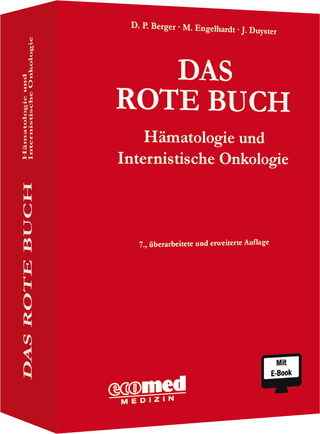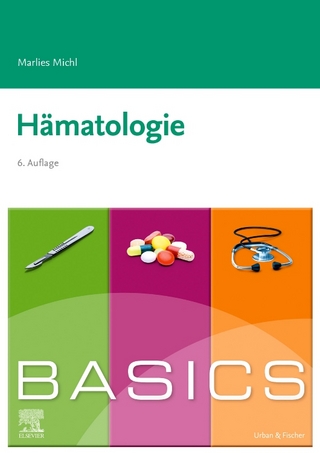
The Neutrophil
Kluwer Academic/Plenum Publishers (Verlag)
978-0-306-30951-9 (ISBN)
- Titel ist leider vergriffen;
keine Neuauflage - Artikel merken
Another strong prejUdice is that the full understanding of present knowledge requires one to know how present views have developed.
1 Blood Cells.- 1.1. Platelets.- 1.2. White Cells.- 1.2.1. Lymphocytes.- 1.2.2. Monocytes.- 1.2.3. Polymorphonuclear Cells.- Selected Reading.- 2 Morphology and Cellular Physiology of Neutrophil Granulocytes.- 2.1. The Nucleus.- 2.2. Nucleic Acid Metabolism.- 2.3. The Cytoplasm.- 2.3.1. Carbohydrate Metabolism.- 2.3.2. Protein Synthesis.- 2.4. The Granules.- 2.5. Cell Movement.- 2.6. Directed Cell Movement.- 2.7. Microtubules and Degranulation.- 2.8. The Cell Membrane.- Selected Reading.- 3 The Origin and Development of Neutrophils.- 3.1. The Bone Marrow and Neutrophil Precursors.- 3.1.1. Granule Formation.- 3.1.2. Functional Differences Between Neutrophils and Their Precursors.- 3.2. Rates of Cell Division in Neutrophil Precursors.- 3.2.1. Morphological Methods.- 3.2.2. Tritiated Thymidine Methods.- 3.2.3. Critique of Marrow Kinetic Methods.- 3.2.4. Ineffective Granulopoiesis?.- 3.2.5. DFP Methods.- 3.3. Neutrophil Precursors Which Cannot Be Recognized Morphologically.- 3.3.1. The Hemopoietic Stem Cell.- 3.3.2. The Colony-Forming Cell.- 3.4. Summary.- Selected Reading.- 4 Tissue Consumption of Granulocytes and Control Mechanisms for Granulopoiesis.- 4.1. Distribution, Function, and Disposal of Neutrophils.- 4.2. Control of the Blood Neutrophil Level.- 4.2.1. Mobilization from Capillary Walls.- 4.2.2. Mobilization of the Mature Pool from Bone Marrow.- 4.2.3. Chalones.- 4.2.4. The Colony-Stimulating Factor.- 4.2.5. Stem Cell Controls.- 4.3. Summary.- 5 Inflammation and Chemotaxis.- 5.1. Inflammation.- 5.1.1. Gross Aspects.- 5.1.2. Microscopic Aspects.- 5.1.3. Increased Vascular Permeability.- 5.1.4. Emigration of Cells from Vessels.- 5.1.5. Mediators of Inflammation.- 5.2. Chemotaxis.- 5.2.1. Chemotaxis on Glass Slides.- 5.2.2. The Boyden Chamber.- 5.2.3. The System of Zigmond and Hirsch.- 5.2.4. Chemotactic Substances.- 5.2.5. The Serine Esterase of Neutrophil Membranes.- 5.2.6. Neutrophil-Immobilizing Factors.- 5.3. Antagonists of Inflammation.- 5.4. Summary.- Selected Reading.- 6 Phagocytosis.- 6.1. Mechanisms of Phagocytosis.- 6.1.1. General Considerations.- 6.1.2. Surface Phagocytosis.- 6.1.3. The Heat-Labile Opsonin System.- 6.1.4. Opsonization Mediated by Antibodies.- 6.1.5. Receptors on Neutrophil Membranes.- 6.2. Physiological Significance of Phagocytic Mechanisms.- 6.3. Summary.- 7 Degranulation and Intracellular Killing of Bacteria.- 7.1. Historical Aspects.- 7.2. Phagocytin.- 7.3. Degranulation.- 7.3.1. Specific Degranulation.- 7.3.2. Possible Membrane-Fusion Mechanisms.- 7.4. Intracellular Killing of Bacteria.- 7.4.1. Oxygen and Bacterial Killing.- 7.4.2. Myeloperoxidase.- 7.4.3. Oxidative Killing of Bacteria.- 7.4.4. Oxidative Killing Mechanisms Not Involving Peroxidase.- 7.4.5. Nonoxidative Bactericidal Mechanisms.- 7.5. Summary.- 8 Other Activities of Neutrophils.- 8.1. Extracellular Release of Neutrophil Granule Contents.- 8.1.1. Enzyme Release During Phagocytosis.- 8.1.2. Enzyme Release During "Frustrated Phagocytosis".- 8.1.3. Enzyme Release Stimulated by Chemotactic Factors.- 8.1.4. Enzyme Release After Cell Death.- 8.1.5. Cell Lysis from Within.- 8.2. Enzymes Responsible for Tissue Damage.- 8.2.1. Cathepsins.- 8.2.2. Neutral Proteases.- 8.3. Abscess Formation.- 8.4. The Arthus Reaction.- 8.5. Nephrotoxic Nephritis.- 8.6. Serum Sickness.- 8.7. The Schwartzman Reaction.- 8.8. Human Diseases Involving Neutrophils.- 8.9. Neutrophils and Tissue Repair.- 8.10. Fever and Other Hormonally Mediated Responses to Infection.- References.
| Erscheint lt. Verlag | 1.11.1976 |
|---|---|
| Zusatzinfo | 42 black & white illustrations, biography |
| Sprache | englisch |
| Themenwelt | Medizinische Fachgebiete ► Innere Medizin ► Hämatologie |
| Studium ► 1. Studienabschnitt (Vorklinik) ► Physiologie | |
| ISBN-10 | 0-306-30951-3 / 0306309513 |
| ISBN-13 | 978-0-306-30951-9 / 9780306309519 |
| Zustand | Neuware |
| Haben Sie eine Frage zum Produkt? |
aus dem Bereich


